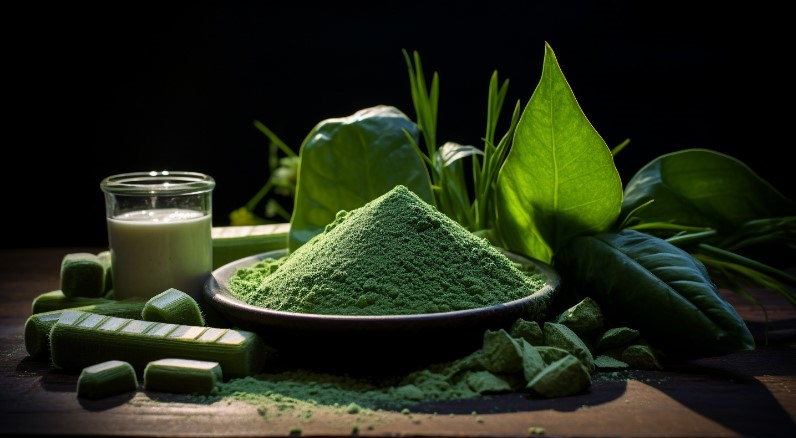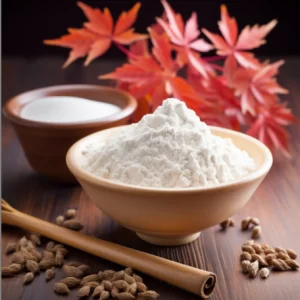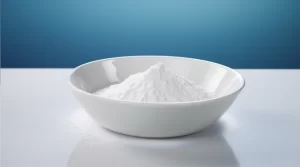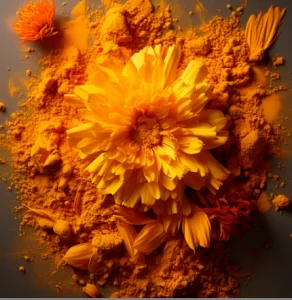How much do you know about chlorophyll

Chlorophyll (Chlorophyl) is a chlorophyl green pigment contained in higher plants and other photosynthetic organisms. There are many kinds of chlorophyll, such as chlorophyll a, b, c and d, as well as bacterial chlorophyll and chlorophyllin, etc., and the chlorophyll a and b in higher plants are mainly related to food. The common feature of its structure is that it includes a porphyrin ring composed of four pyrroles, and four pyrroles are combined with metallic magnesium.
Estimation and monitoring of chlorophyll content is a key step in crop spectral image analysis. Rapid and non-destructive evaluation of chlorophyll content in rice leaves can optimize nitrogen fertilizer application, benefit environment and economy, and improve rice production management level and quality.
Bioanabolism of chlorophyll
The biosynthetic pathway of chlorophyll a is the condensation of succinyl-Coenzyme A and glycine into 5-aminolevulinic acid, the condensation of two 5-aminolevulinic acids into the pyrrole derivative bilinogen, and then the polymerization of four bilinogen into a porphyrin ring – protoporphyrin IV, protoporphyrin IV is the common precursor to the formation of chlorophyll and ferrous heme, which is combined with ferrous heme to form ferrous heme. It combines with magnesium to form magnesium protoporphyrin. The magnesium protoporphyrin then accepts a methyl group and becomes a prophytyl-chlorophyll with a fifth ring after cyclization. The latter is formed into chlorophyll A by photoreduction and esterification.
Chlorophyll is also in a constant state of renewal in the living body, where it is broken down by chlorophyll enzymes, or bleached by photooxidation. In late autumn, the leaves of many tree species are red, because the chlorophyll degradation rate is greater than the synthesis rate, the content is reduced, and the carotenoid and anthocyanin colors that were originally covered by chlorophyll are displayed. Chlorophyll contains N Mg, carotenoids do not contain N Mg.
During plant aging and storage, enzymes can cause the breakdown and destruction of chlorophyll. These enzymatic changes can be divided into direct and indirect effects. The only direct chlorophyllin substrate is chlorophyll enzyme, which catalyzes the hydrolysis of phytol ester bonds in chlorophyll to produce chlorophyllin. There are protease, esterase, lipoxygenase, peroxidase, pectinesterase and so on which play an indirect role.
In living green plants, chlorophyll can perform photosynthesis without photodecomposition. However, in the process of processing and storage, chlorophyll is often affected by light and oxygen, and is photolysis into a series of small molecules and fade. The photolysis products are lactic acid, citric acid, succinic acid, maleic acid, and a small amount of alanine.
Method for determination of chlorophyll content
According to the absorbance of chloroplast pigment extract to visible spectrum, the absorbance of chloroplast pigment extract can be measured at a specific wavelength, and the content of each pigment in the extract can be calculated by formula. According to the Lambert-Beer law, the absorbance A of A colored solution is proportional to the solute concentration C and the liquid layer thickness L, that is, A = αCl: α proportional constant. The absorbance coefficients of various colored substance solutions at different wavelengths can be obtained by measuring the absorbance of pure substances with known concentrations at different wavelengths. If there are several light-absorbing substances in the solution, the total absorbance of the mixture at a certain wavelength is equal to the sum of the absorbance of each component at the corresponding wavelength. This is the addition of absorbance. To determine the content of chlorophyll A, b and carotenoid in chloroplast pigment mixed extract, it is only necessary to determine the absorbance A of the extract at three specific wavelengths, and the concentration of chlorophyll a, b and carotenoid can be obtained according to the absorbance coefficient of the extract at the same wavelength. In order to eliminate the interference of carotenoids in the determination of chlorophyll a and b, the wavelength of the monochromatic light used selects the maximum absorption peak of chlorophyll in the red region.
Measurement operation
Weigh fresh plant leaves or other green tissue, remove the midvein, weigh about 0.1g, cut, wash with distilled water.
Add 1mL distilled water, a small amount of one reagent (about 50mg), fully grind under dark or low light conditions, and transfer to 10mL glass test tube.
Rinse the mortar with the extraction solution, transfer all the rinsed solution into the glass test tube, supplement with the extraction solution to 10mL, put the glass test tube in dark conditions or wrap with tin foil for 3h, observe the tissue residue at the bottom of the test tube completely white, then extract completely. If the tissue residue is not completely white, continue to soak until it is completely white.
The extraction solution was 200μL in a microquartz colorimetric dish / 96-well plate, the extraction solution was zeroized, and the absorption values at 663nm, 645nm and 470nm were determined, denoted as A663, A645 and A470, respectively
Chlorophyll is divided into: chlorophyll a, chlorophyll b, chlorophyll c, chlorophyll d, chlorophyll f, protochlorophyll and bacterial chlorophyll.
Chlorophyll is not very stable, light, acids, bases, oxygen, oxidants, etc., will cause it to decompose. Under acidic conditions, chlorophyll molecules easily lose magnesium in the porphyrin ring to become pheophytin. The chlorophyll solution can perform a reaction similar in part to photosynthesis, oxidizing or reducing certain compounds under light. Artificially prepared chlorophyll film can generate photopotential and photocurrent under light, and can also catalyze some REDOX reactions.
Do you know what vegetables are rich in chlorophyll?
That’s right, celery
Following my footsteps, take you to understand it ~
Primary value
Celery is a vegetable with high nutritional value, rich in protein, carbohydrates, dietary fiber, vitamins, calcium, phosphorus, iron, sodium and other more than 20 nutritional elements. The content of protein and phosphorus is twice higher than that of melons, and the content of iron is 20 times more than that of tomatoes.
Medicinal value
1, celery has many pharmacological active ingredients, the main active ingredients include: flavonoids, volatile oil compounds, unsaturated fatty acids, chlorophyll, mushrooms, coumarin derivatives and so on. Researchers have studied the most, the most in-depth is apigenin, with anti-tumor, anti-inflammatory, antioxidant, blood pressure and vasodilator effects.
2. Celery is rich in apigenin, which can dilate blood vessels and reduce blood pressure smoothly. Take it directly with fresh celery juice or tender celery mashed juice and a little honey, can prevent hypertension. Celery is high in calcium and phosphorus, which can enhance bone health.
3, celery high cellulose content, after digestion to produce an antioxidant, can inhibit intestinal bacteria. It can also speed up intestinal peristalsis, promote excretion, reduce the contact time between carcinogens and colon mucosa, and prevent colon cancer. Celery is rich in potassium, can prevent edema, edema patients should eat more fresh celery juice.
5, celery is rich in iron, and regular consumption can play the role of iron. Celery contains substances that can neutralize uric acid, and you can often eat celery cooked in fresh milk to prevent gout.
The human body is too easy to catch fire in summer, chlorophyll has a certain fire-reducing effect, and regularly supplementing chlorophyll has certain benefits for the skin! It can clear the body detoxification, regulate the stomach, change the acidic constitution, but also improve hematopoietic function, provide vitamins, constipation has special effects oh!
Backvita



